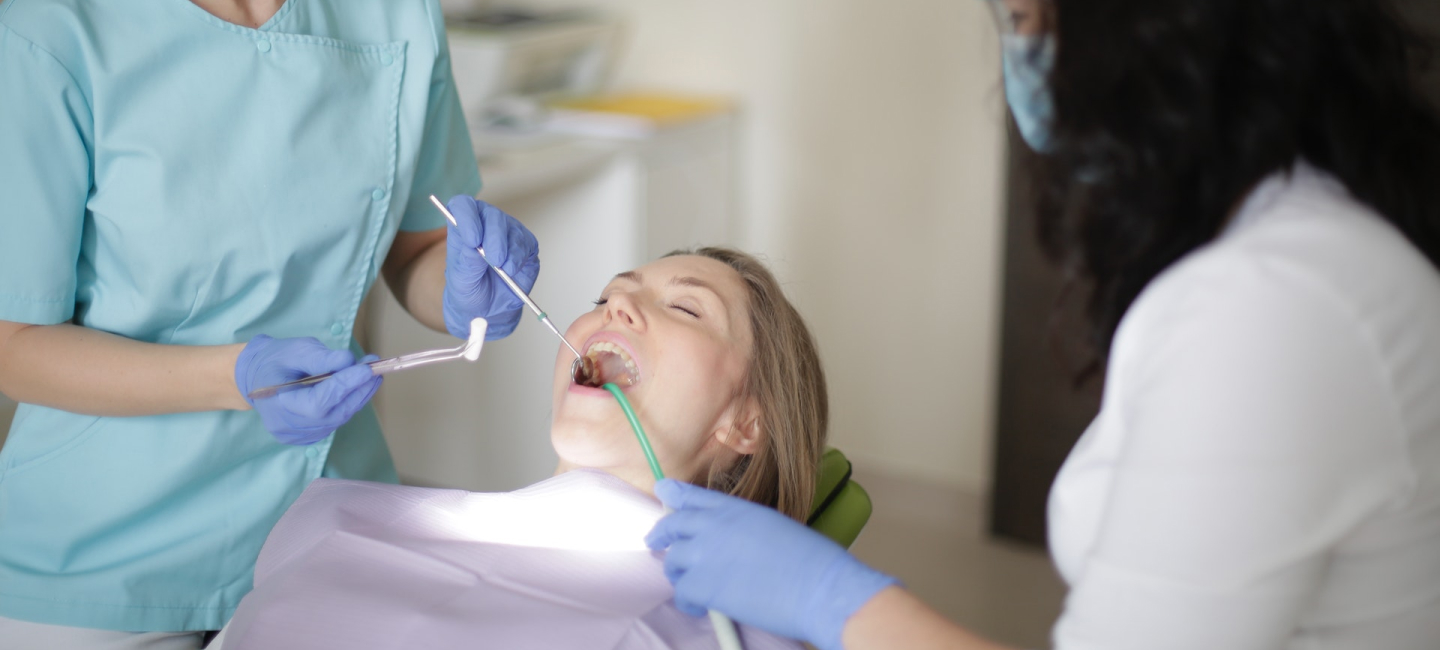 Going to the dentist can be a little bit scary for some people. Maybe they feel uncomfortable in the dentist’s chair, or they don’t want to hear the teeth cleaning lectures. But is it possible that some of the anxiety brought on by the dentist’s office could
Going to the dentist can be a little bit scary for some people. Maybe they feel uncomfortable in the dentist’s chair, or they don’t want to hear the teeth cleaning lectures. But is it possible that some of the anxiety brought on by the dentist’s office could
come from those bright, shiny, dental instruments that are found on the dentist’s tray? Well worry no more, because we are going to explain to you just what those instruments are, and how they help you.
Mouth mirrors and probes are the most common dental examination instruments used. A mouth mirror is a small, round mirror at the end of a metal grip. It allows the dentist to examine a person’s teeth and gums from various angles. A simple looking instrument, it’s actually quite ingenious.
The mirrors allow light, making it easier for the dentist to see, and they also magnify whatever the dentist is examining.
Probes are the metal handle with a small hook at the end, used to check for cavities
and issues within the teeth and gums. The most basic probe with a hook shaped
pick is known as the “explorer”. Another type of probe is the periodontal probe, which is used to measure the depth of the pocket in the gum and around the tooth to check for periodontal disease. The dentist can also use a periodontal probe to scrape beneath the gums to prevent periodontal disease from occurring. The periodontal scaler is used to remove buildup such as accumulated stains and plaque from the teeth. The sharp ends can also be used to poke and pry crowns or fillings and remove them for work to be done on the tooth.
Retractors and saliva ejectors are also used, so the patient does not get in the way of
the dentist. The most common retractor is a mouth prop or bite block. The mouth
prop is a wedge-shaped device used with patients who have a hard time keeping
their mouths open wide and still. They are typically ridged and use the back
teeth to hold the item in place during procedures. Mouth props come in several
different sizes ranging from pediatric to adult. Since patients are often
forced to keep their mouths open for long periods of time during procedures, a
lot of saliva can form. A saliva ejector is a curved tube placed inside the
patient’s mouth to vacuum saliva out. Besides saliva ejectors, dentists can also use more basic absorbent substances, like cotton balls.
Another piece of equipment that is valuable to a dentist in exposing problems is the X-ray machine. X-ray equipment helps the dentist identify problematic spots and conditions in the patient’s teeth or gums that may not be noticeable in a standard examination. X-rays can help detect tooth decay long before it becomes visible to the dentist’s eye during an exam.
Probably the least popular instrument in a dentist’s office is the bur, commonly called the drill. The bur is used to prepare the space where a cavity was, to clean out, smooth, and polish a patient’s tooth. Because this can be somewhat painful, a numbing agent, what we commonly call Novocain, is administered into the gums by needle. To make it less uncomfortable, a numbing gel is applied to the gum first. If you close your eyes, all you’ll feel is a pinch and mild sting. It’s really not so bad!
There is no reason for uncertainty at the dentist. Always ask questions if you have
them. Being able to put a name and function to the dental instruments you’ve
seen for years should ease the anxiety associated with the next trip to the
dentist office. The industry has come a long way, and advances have made dental
procedures much easier to tolerate, and often there is no discomfort at all.

